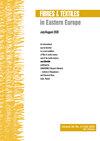Herbal Extract-Induced Silver Nanoparticles For Antibacterial Cotton Fabric
IF 0.9
4区 工程技术
Q3 MATERIALS SCIENCE, TEXTILES
引用次数: 0
Abstract
Abstract Herbal extract-induced metallic nanoparticles have replaced the traditionally synthesized nanoparticles to achieve sustainability in antimicrobial textiles. Silver nanoparticles (NPs) were created by the bio-reducion of silver nitrate with eucalyptus corymbia leaf extract. The bi-lateral activities of herbal extract, like the reduction and capping of silver nanoparticles, have added new dimensions in the bactericidal sector. Silver nanoparticles were characterized by UV-visible spectroscopy, a particle size analyzer, Fourier transform infrared spectroscopy (FTIR), field emission scanning electron microscopy (FESEM), energy dispersive X-ray (EDX) and X-ray diffractometry. In this study these biosynthesized nanoparticles were applied on cotton fabric alone and along with chitosan by the pad-dry-cure method to create antibacterial clothing. Antibacterial efficiency was characterized using the colony counting method (serial dilution method). The treated fabric shows excellent antibacterial efficiency.草药提取物诱导的纳米银抗菌棉织物
摘要草药提取物诱导的金属纳米颗粒已经取代了传统合成的纳米颗粒,以实现抗菌纺织品的可持续性。采用桉叶提取物对硝酸银进行生物还原制备纳米银。草药提取物的双边活性,如银纳米颗粒的还原和封盖,在杀菌领域增加了新的维度。采用紫外可见光谱、粒径分析仪、傅里叶变换红外光谱(FTIR)、场发射扫描电镜(FESEM)、能量色散x射线(EDX)和x射线衍射等方法对纳米银进行了表征。在这项研究中,这些生物合成的纳米颗粒单独应用于棉织物上,并与壳聚糖一起通过垫-干固化方法制备抗菌服装。采用菌落计数法(连续稀释法)对其抑菌效果进行了表征。处理后的织物具有优异的抗菌效果。
本文章由计算机程序翻译,如有差异,请以英文原文为准。
求助全文
约1分钟内获得全文
求助全文
来源期刊

Fibres & Textiles in Eastern Europe
工程技术-材料科学:纺织
CiteScore
1.60
自引率
11.10%
发文量
12
审稿时长
13.5 months
期刊介绍:
FIBRES & TEXTILES in Eastern Europe is a peer reviewed bimonthly scientific journal devoted to current problems of fibre, textile and fibrous products’ science as well as general economic problems of textile industry worldwide. The content of the journal is available online as free open access.
FIBRES & TEXTILES in Eastern Europe constitutes a forum for the exchange of information and the establishment of mutual contact for cooperation between scientific centres, as well as between science and industry.
 求助内容:
求助内容: 应助结果提醒方式:
应助结果提醒方式:


